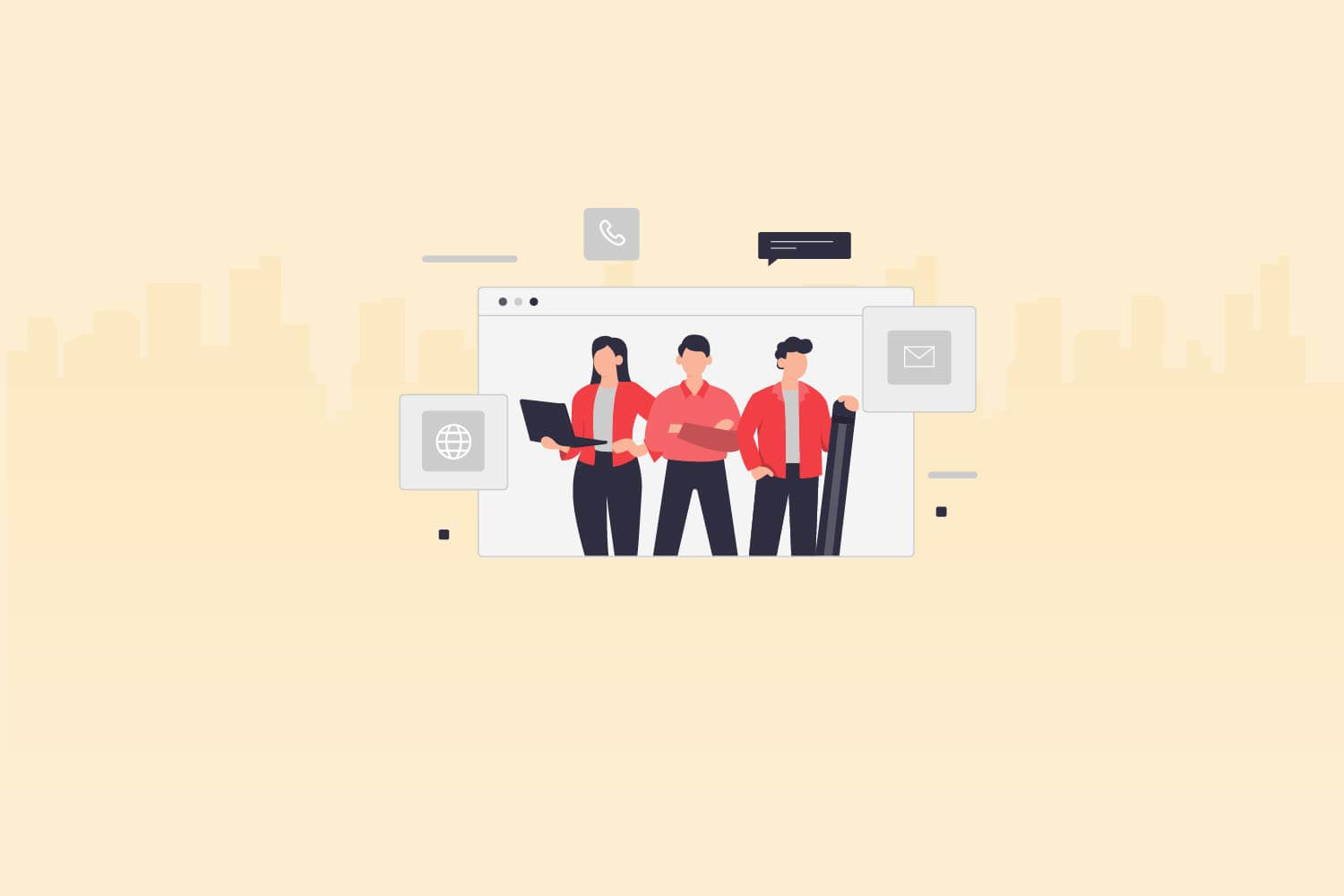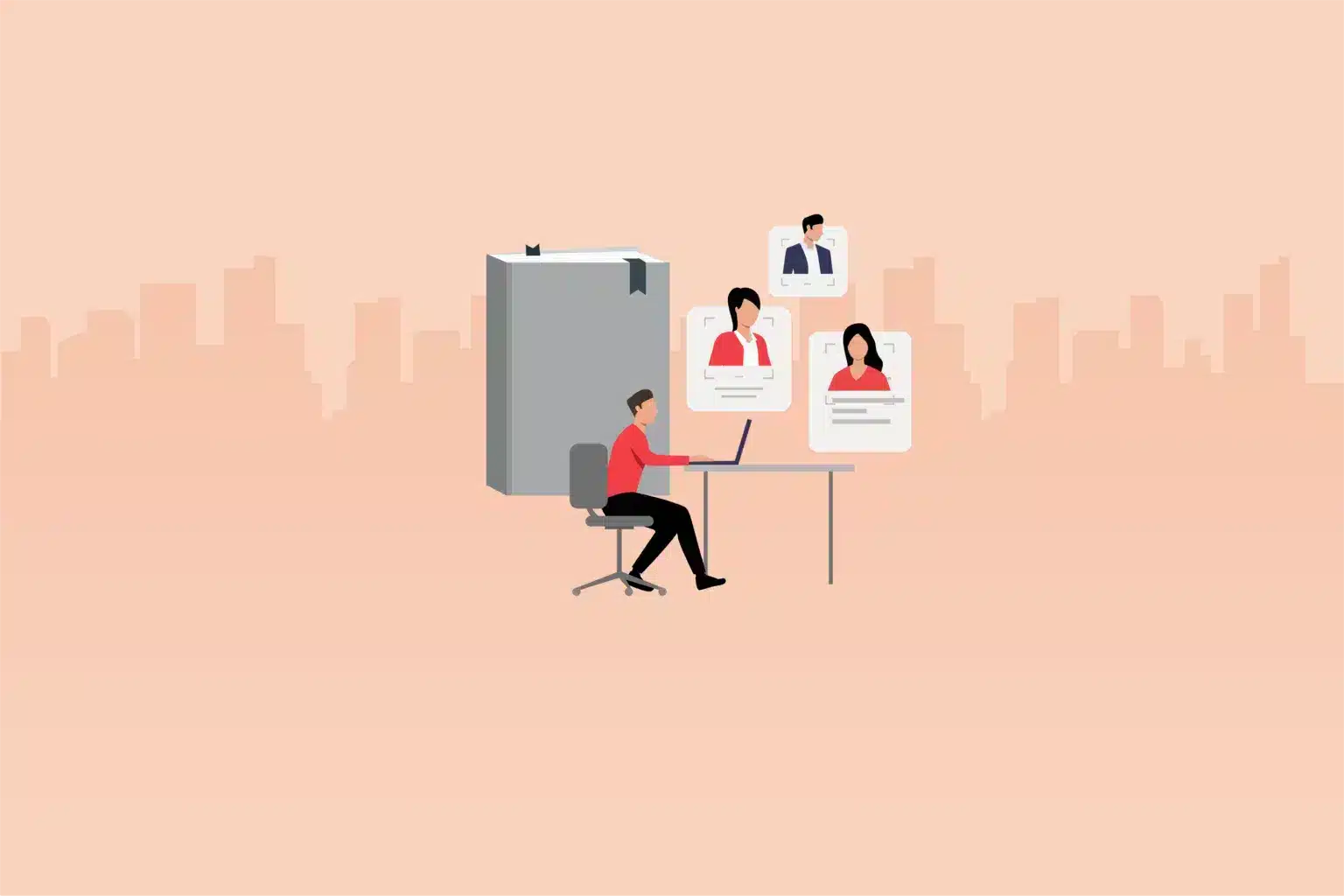Welcome to a deep dive into the ever-evolving landscape of workplace culture. As the modern workplace continues to transform at an unprecedented pace, staying ahead of the curve has never been more critical. In this blog, we will explore the “future of workplace culture” and provide you with the knowledge and insights you need to navigate this dynamic terrain successfully.
Workplace culture isn’t just a buzzword; it’s the heartbeat of any organization. It defines the values, beliefs, and behaviors that shape the work environment and influence employee satisfaction, performance, and retention. In today’s fast-paced world, workplace culture is experiencing a dramatic shift, driven by factors such as technology, globalization, and changing employee expectations.
Join us as we uncover the key elements shaping the future of workplace culture, understand the pivotal role of HR in this transformation, and explore strategies for building a resilient and inclusive work environment. Discover how successful organizations are leading the way and learn how you can leverage these insights to drive positive change within your own company.
Let’s embark on this journey to unlock the secrets of the future of workplace culture and equip ourselves with the tools needed to thrive in this new era.
The evolution of workplace culture
The workplace culture we know today is the result of a long and intricate evolution. Understanding its historical development is crucial for grasping the dynamics of the future of workplace culture. In the past, organizations often operated under hierarchical and rigid structures, where employees adhered to strict rules and norms. This culture was characterized by top-down decision-making, limited flexibility, and a focus on productivity above all else.
However, as we fast-forward to the present day, we see a significant shift in workplace culture. Technological advancements, globalization, and changing societal values have played pivotal roles in reshaping how we view work and the environment in which it takes place. Employees are no longer content with simply earning a paycheck; they seek purpose, autonomy, and meaningful connections within their workplace.
Moreover, the COVID-19 pandemic accelerated certain changes, particularly in terms of remote work and digital communication tools. Organizations were forced to adapt rapidly to new ways of working, and this shift is likely to have a lasting impact on the future of workplace culture.
As we move forward, it’s essential for HR professionals and business leaders to recognize this evolution and embrace the changes it brings. To remain competitive and attract top talent, organizations must foster cultures that prioritize flexibility, inclusivity, and employee well-being. The journey to understanding the future of workplace culture begins with acknowledging the transformation it has undergone and the forces that will continue to shape it.
Workplace culture’s impact on employee well-being
Workplace culture isn’t just a buzzword; it’s a powerful force that can significantly influence the well-being of employees. In the context of the future of workplace culture, understanding its impact on employee well-being is paramount. A positive workplace culture can enhance mental and physical health, job satisfaction, and overall happiness, while a toxic or neglectful culture can have the opposite effect.
One of the key elements of the evolving workplace culture is a growing emphasis on employee well-being. As employees seek more meaningful and balanced lives, organizations must respond by creating environments that support their physical and emotional health. This includes initiatives that address stress, burnout, and mental health issues, as well as promoting a healthy work-life balance.
Inclusive workplace cultures that value diversity and respect individual differences can contribute significantly to employee well-being. When employees feel that they belong and are accepted for who they are, it can boost their confidence, job satisfaction, and mental well-being. Therefore, diversity and inclusion efforts are becoming integral components of the future workplace culture, contributing to a more harmonious and healthy work environment.
The adoption of flexible work arrangements and remote work options, accelerated by the COVID-19 pandemic, also plays a role in employee well-being. These arrangements allow employees to better balance their professional and personal lives, reducing stress and improving overall job satisfaction.
In conclusion, the future of workplace culture must prioritize employee well-being as a core element. Organizations that invest in creating cultures that support their employees’ physical and mental health will not only attract and retain top talent but also foster a more productive and satisfied workforce. As we look ahead, the well-being of employees will continue to be a critical aspect of the evolving workplace culture.
The role of HR in shaping workplace culture
In the ever-evolving landscape of the future of workplace culture, the Human Resources (HR) department plays a central and transformative role. HR professionals are the architects of a company’s culture, responsible for shaping, nurturing, and preserving it. As organizations adapt to changing times, the role of HR becomes even more critical in ensuring that culture aligns with the company’s values and goals.
HR departments are no longer limited to administrative tasks; they have evolved into strategic partners in building a positive workplace culture. This shift involves a multifaceted approach that encompasses several key aspects:
Firstly, HR professionals are responsible for defining and communicating the company’s values and cultural expectations. They establish the framework within which employees operate and provide guidance on acceptable behaviors, fostering a sense of unity and purpose.
Secondly, HR departments are instrumental in recruitment and onboarding processes. They identify candidates who not only possess the necessary skills but also align with the organization’s culture. This ensures a harmonious blend of talent that reinforces the desired workplace culture.
Thirdly, HR is charged with creating and implementing policies and practices that promote diversity, equity, and inclusion. In the future, inclusive cultures will be a hallmark of successful organizations, and HR’s role in championing these values is indispensable.
Moreover, HR professionals are at the forefront of employee development and engagement initiatives. They facilitate ongoing learning, career growth, and support mechanisms, all of which contribute to a positive work environment and employee well-being.
In conclusion, HR’s role in shaping the future of workplace culture is multifaceted and essential. It involves setting the cultural foundation, aligning talent, promoting diversity and inclusion, and fostering employee development and engagement. As organizations adapt to new challenges and opportunities, HR remains a key driver in creating cultures that empower employees and drive success.
Challenges and opportunities ahead
As we contemplate the future of workplace culture, it’s essential to recognize the myriad challenges and opportunities that lie ahead. Embracing change is a prerequisite for success, and organizations must navigate these challenges while leveraging the opportunities to thrive in the evolving landscape.
One of the foremost challenges is the adoption of hybrid work models. While remote work has become more prevalent, balancing it with in-person collaboration poses a unique set of challenges. Organizations need to establish effective communication, maintain team cohesion, and ensure equal opportunities for remote and in-office employees. Overcoming these challenges will be vital in fostering a cohesive workplace culture.
Addressing cultural disparities is another significant challenge. As organizations expand globally, they encounter diverse cultures and values. Navigating these differences while maintaining a cohesive and inclusive workplace culture requires sensitivity, adaptability, and cultural competence.
Technology, while offering numerous benefits, presents its own challenges. Overreliance on digital communication tools can lead to isolation and hinder interpersonal relationships. Striking a balance between technological efficiency and human connection is a crucial challenge for the future workplace culture.
However, with challenges come opportunities. The increasing focus on workplace culture presents an opportunity for organizations to differentiate themselves in the talent market. Those that prioritize inclusive, flexible, and employee-centric cultures will attract top talent and retain valuable employees.
Moreover, the wealth of data available today allows organizations to measure and monitor workplace culture more effectively. This data-driven approach provides insights that can inform targeted culture improvement strategies, helping organizations align culture with their goals and values.
In conclusion, the future of workplace culture is marked by both challenges and opportunities. Organizations that proactively address challenges, adapt to change, and leverage opportunities will be best positioned to create a workplace culture that not only survives but thrives in the years to come.
Building a resilient workplace culture
In the ever-changing landscape of the workplace, building resilience within an organization’s culture has become a critical imperative. Resilience is the ability to adapt, withstand challenges, and recover from setbacks. In the context of workplace culture, it means creating an environment that not only endures change but thrives because of it.
One key aspect of building a resilient workplace culture is fostering adaptability. Organizations must encourage employees to embrace change, learn from it, and adapt accordingly. This involves cultivating a growth mindset where challenges are seen as opportunities for growth and innovation.
Strong leadership plays a pivotal role in building resilience. Leaders must lead by example, demonstrating adaptability, transparency, and a willingness to listen to employee concerns. When employees see their leaders navigating change effectively, it sets a positive tone for the entire organization.
Continuous learning and development are integral components of a resilient culture. Organizations should invest in employee training and provide opportunities for skill development. This not only equips employees to handle change but also instills a sense of empowerment and confidence.
Moreover, building resilience involves creating a supportive and inclusive culture. Employees should feel safe expressing their concerns, and their well-being should be a top priority. A culture of trust and psychological safety enables employees to take risks, collaborate, and innovate.
In conclusion, building a resilient workplace culture is about creating an environment that not only survives disruptions but thrives in the face of adversity. By promoting adaptability, strong leadership, continuous learning, and inclusivity, organizations can equip themselves to navigate the ever-evolving landscape of the future workplace culture with confidence and resilience.
Measuring and monitoring workplace culture
In the quest to shape and improve workplace culture for the future, it’s crucial to have effective mechanisms in place for measuring and monitoring its various aspects. This entails the use of data-driven approaches to gain insights into the current state of the culture, track progress, and identify areas for enhancement.
Key Performance Indicators (KPIs) serve as valuable tools for assessing workplace culture. These indicators can include metrics related to employee engagement, turnover rates, diversity and inclusion, and even productivity. By tracking these KPIs over time, organizations can gauge the impact of culture-related initiatives and make informed decisions.
Employee feedback and engagement surveys are essential components of culture measurement. These surveys provide a platform for employees to voice their opinions, concerns, and suggestions anonymously. Analyzing the feedback from these surveys can help organizations identify areas of improvement and tailor strategies to address specific issues.
In addition to quantitative data, qualitative insights are equally vital. Focus groups, one-on-one interviews, and open forums allow for more in-depth discussions about workplace culture. They can uncover nuances and sentiments that quantitative data alone may not capture.
Advancements in technology have also paved the way for innovative culture measurement tools. Artificial intelligence and sentiment analysis can help organizations sift through large volumes of data, extracting valuable insights regarding employee sentiment and perceptions of workplace culture.
Overall, the measurement and monitoring of workplace culture are ongoing processes. It’s essential for organizations to continuously assess the effectiveness of their culture-building efforts, adapt to changing circumstances, and remain agile in their approach. By using a combination of quantitative and qualitative methods and leveraging technology, organizations can proactively shape a positive and future-ready workplace culture.
Case studies: Organizations leading the way
Examining case studies of organizations that have successfully embraced and implemented forward-thinking workplace culture practices can provide valuable insights and real-world examples of what works. These case studies serve as inspirational stories for other businesses looking to enhance their own workplace cultures.
One exemplary organization that stands out is Google. Known for its innovative and employee-centric culture, Google offers a prime example of how fostering creativity and providing a flexible work environment can yield remarkable results. From its famous 20% time policy, which allows employees to work on personal projects, to its emphasis on employee well-being and inclusion, Google has set a high standard for workplace culture.
Another noteworthy case study is Airbnb. The company’s commitment to diversity and inclusion is evident in its practices, which include addressing pay equity and providing unconscious bias training. Airbnb’s focus on belonging and acceptance has not only improved its culture but also its reputation.
Salesforce is yet another example of an organization leading the way in workplace culture. The company’s dedication to philanthropy and giving back to the community has shaped a culture of corporate social responsibility. Salesforce has shown how a strong sense of purpose can drive employee engagement and satisfaction.
These case studies demonstrate that there is no one-size-fits-all approach to creating an exceptional workplace culture. Instead, organizations should draw inspiration from the strategies and practices of these leading companies while tailoring their culture-building efforts to their unique circumstances and values. By learning from these success stories, businesses can take meaningful steps toward shaping a future-ready workplace culture that benefits employees and the organization as a whole.
Embracing the future of workplace culture
As we’ve explored the various facets of the future of workplace culture, it’s clear that several key themes emerge. These include flexibility, inclusivity, employee well-being, innovation, and sustainability. Businesses that prioritize these elements in their culture-building efforts will not only attract and retain top talent but also adapt more effectively to the ever-changing business environment.
Human Resources (HR) professionals play a pivotal role in this transformation, guiding organizations through the process of cultural change and helping to create environments where employees can thrive. They must be prepared to adapt to new challenges and leverage technology to enhance culture and performance.
While there are challenges ahead, from hybrid work models to addressing cultural disparities, there are also abundant opportunities. Organizations can use data to measure and monitor culture effectively, learn from successful case studies, and build resilience to navigate the uncertainties of the future.
In the end, the future of workplace culture is about creating an environment where employees are not only productive but also fulfilled and empowered. It’s about fostering a sense of belonging, purpose, and shared values. As organizations continue on this journey, they will not only shape their own success but contribute to the broader evolution of work culture in society. Embracing the future of workplace culture is not just a choice; it’s a strategic imperative for organizations that aim to thrive in the years to come.
Conclusion
In this exploration of the “future of workplace culture,” we’ve delved deep into the forces reshaping how we work and the environments in which we work. From the historical context that brought us to this point to the innovative strategies for creating inclusive, flexible, and sustainable cultures, we’ve covered the essentials.
As we conclude this journey, it’s evident that workplace culture is not a static concept but a dynamic force that requires constant attention and adaptation. HR professionals and business leaders play a pivotal role in shaping the culture of their organizations, and their efforts can have a profound impact on employee well-being and organizational success.
Embracing the future of workplace culture means being agile, empathetic, and forward-thinking. It means recognizing the importance of diversity, mental health, and innovation in the workplace. It means leveraging technology wisely and fostering an environment where employees can thrive.
We hope this blog has provided you with valuable insights and practical strategies to navigate the changing landscape of workplace culture. As you embark on this journey in your own organization, remember that the future is not a distant destination; it’s something we create with every decision, action, and commitment we make today. So, let’s build a future of workplace culture that inspires, empowers, and enriches the lives of all employees, setting the stage for a prosperous tomorrow.
Unlock a brighter future for your organization with Testlify – Your key to efficient, data-driven hiring. Join us today and revolutionize your workplace culture while saving time and resources using our new white label feature.








